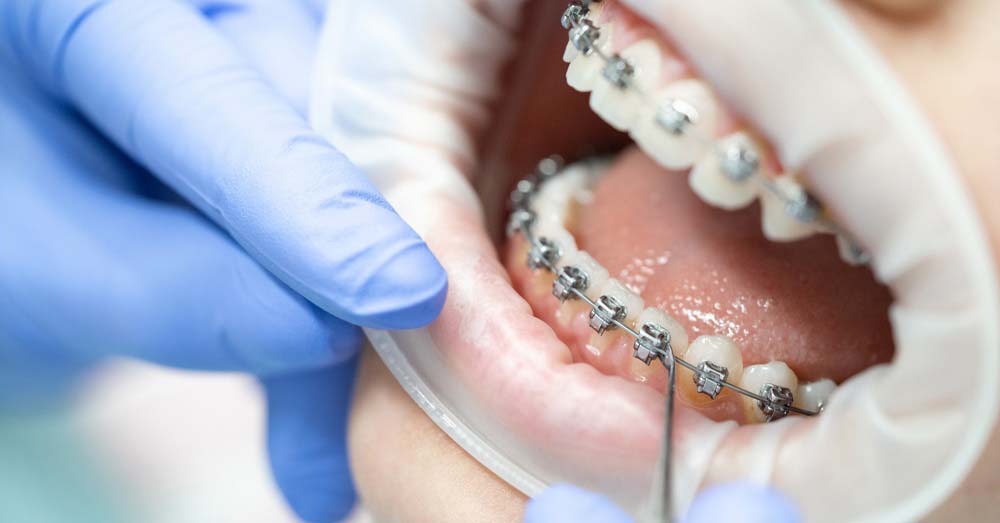 Key Takeaways:
Key Takeaways:
- Whether you will have a straight smile depends on what braces you will use, the severity of your problem, your age when you start treatment, and your commitment to the treatment. Your orthodontist must know what you expect from the procedure and your desired result.
- The duration may differ wildly, depending on the specific treatment. Traditional braces ordinarily take 12-36 months, whereas Invisalign management generally is accomplished within 3-18 months.
- Prepare yourself for occasional discomfort during treatment, stay in touch with your orthodontist, and follow the prescribed method.
Undertaking an orthodontic treatment is a significant step towards correcting misaligned teeth and achieving a new smile. With options ranging from traditional braces to Invisalign therapy, understanding how long it takes to straighten teeth is essential for anyone considering this transformative process. This detailed exploration covers the teeth straightening process, including the types of braces available, factors affecting treatment times, and what to expect during your journey to a beautiful smile.
Key Factors Influencing Orthodontic Treatment Times
Type of Dental Braces
Choosing traditional metal braces, ceramic braces, lingual braces, and clear aligners like Invisalign significantly impacts the teeth straightening timeline. Conventional braces and fixed braces are often used for comprehensive orthodontic treatment, with metal brackets and wires applying constant pressure to all the teeth. Invisalign aligners offer a discreet alternative, with treatment times varying depending on the case’s complexity.
Severity of Misalignment
The duration of braces treatment or Invisalign treatment depends heavily on the initial condition of crooked teeth, crowded teeth, or open bites. Cases with severe misalignment or insufficient space for all the premolar teeth may require longer treatment times to achieve the correct position.
Age and Growth
Treatment times can also vary by age group. Many children and adolescents may see quicker results due to ongoing bone remodelling and growth, aiding tooth movement. Adults may experience slightly longer treatment durations but can still achieve significant improvements with braces or Invisalign.
Compliance with Treatment
Whether using removable braces like Invisalign aligners or traditional brackets, the success and speed of teeth straightening largely depend on patient compliance. Wearing aligners consistently, attending regular appointments with the Invisalign doctor or orthodontist, and using elastic bands as directed are crucial for keeping treatment on track.
Here’s an average time it might take:
| Type of Braces | Treatment Duration |
| Traditional Braces | 12 to 36 months |
| Invisalign | 3 to 18 months |
| Ceramic Braces | 18 to 36 months |
| Lingual Braces | 18 to 36 months |
| Self-Ligating Braces | 12 to 24 months |
Understanding the Orthodontic Treatment Process
Initial Consultation
The journey to straight teeth begins with an initial consultation, where an Invisalign-trained doctor or orthodontist evaluates your dental and orthodontic issues. This initial phase is crucial as it determines the type of teeth straightening treatment suitable for you, whether that involves metal braces, ceramic braces, or Invisalign aligners.
Choosing the Right Type of Braces
Selecting the appropriate type of braces is a critical decision. Traditional metal braces apply gentle pressure through brackets and wires, effectively treating moderate to severe crowding and misalignment. Invisalign offers a more discreet alternative with removable aligners, which are ideal for mild to moderate cases and those prioritising aesthetics.
Regular Adjustments and Monitoring
Regardless of the chosen method, regular appointments with your dentist or orthodontist are essential for adjusting and monitoring progress. These visits ensure that teeth are moving as planned and allow modifications to the treatment plan if necessary.
Achieving Your New Smile
The moment when braces or aligners are removed to reveal straightened teeth is a milestone in the teeth straightening process. Achieving this beautiful smile requires patience, commitment, and a willingness to follow through with prescribed treatments and care.
Fulham Road Dental: An award-winning dental practice for you and your family
In our reward-winning practice, your individual experience of our dental treatment for teeth correction and orthodontics treatments at Fulham Road Dental is designed to give you all the support you need.
These include the kind of braces, the level of dental issues, and the degree of obligingness, which can substantially influence the duration of treatment. Even though the treatment varies from traditional metal braces to clear braces or Invisalign aligners, each respective route is designed to correctly align twisted or crooked teeth and give them a confident, beautiful smile.
FAQ’s
Can I straighten my teeth in 3 months?
Applying braces to straighten teeth in a three-month timeframe is super time-limited and theoretically impossible in most of our patients. This time frame can extend from a couple of months to a couple of years, given that the degree of misalignment to be fixed, the selected type of treatment, and individual factors like age and growth significantly vary.
Which teeth are the hardest to straighten?
As a rule, the back teeth that are hardest to align normally are molars and premolars because of the lack of room in the mouth and insufficient accessibility. Teeth that are severely crooked, impacted, or overcrowded cause more trouble for orthodontists when trying to reach exact alignment positions. Teeth tilting can be complex, so it may take longer to straighten them. In some cases, a rotation of teeth may be required!
In many scenarios, surgical intervention becomes an alternative for teeth that have erupted in the wrong location. After thoroughly evaluating the teeth, consulting an orthodontist will enable finding the most efficient treatment plan.
Is it painful to straighten teeth?
Orthodontic treatment, essential for correcting misaligned teeth, can sometimes be uncomfortable and cause pain. During the treatment, patients might experience sensations of pressure or aching in their mouths, with the severity of discomfort differing among individuals.
However, this pain typically diminishes over time. To manage any discomfort, you can use pain relievers and stick to a diet of soft foods. Maintaining open communication with your orthodontist is vital to ensure you receive proper advice and support throughout the treatment process.

 Key Takeaways:
Key Takeaways:
